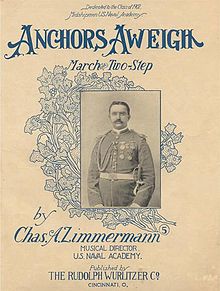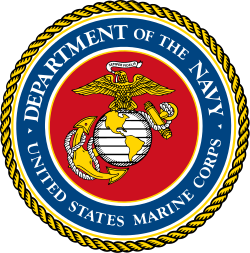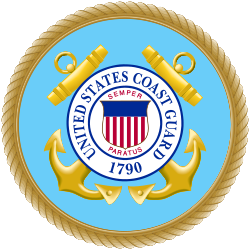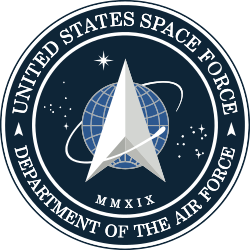Anchors Aweigh (Marsch)

Anchors Aweigh (im Deutschen gebräuchliche Titel Anker auf oder Anker gelichtet) ist ein amerikanischer Militärmarsch. 1906 von Charles A. Zimmermann (1861–1916), damals Kapellmeister der United States Naval Academy Band, als Marsch für Football-Spiele komponiert, hat er sich seitdem zum meistgespielten Stück der US-Marine entwickelt und gilt als inoffizielle Hymne der United States Navy.[1]
Entstehung
Lieutenant Charles A. Zimmermann, Absolvent des Peabody Conservatory und seit 1887 Kapellmeister der United States Naval Academy Band, komponierte 1906 auf Anfrage des Midshipman First Class Alfred Hart Miles einen Marsch für das traditionelle Footballspiel zwischen der US Naval Academy und der Military Academy der US Army. Miles steuerte auch den Text zum Marsch bei, der am 1. Dezember 1906 beim Spiel auf dem Franklin Field in Philadelphia beim 10:0-Sieg der Navy Premiere feierte.[1]
Text
Originaltext von 1906:[2]
- Stand Navy down the field, sails set to the sky.
- We’ll never change our course, so Army you steer shy-y-y-y.
- Roll up the score, Navy, Anchors Aweigh.
- Sail Navy down the field and sink the Army, sink the Army Grey.
- We’ll never change our course, so Army you steer shy-y-y-y.
- Get underway, Navy, Decks cleared for the fray,
- We’ll hoist true Navy Blue So Army down your Grey-y-y-y.
- Full speed ahead, Navy; Army heave to,
- Furl Black the Grey and Gold and hoist the Navy, hoist the Navy Blue
- We’ll hoist true Navy Blue So Army down your Grey-y-y-y.
Überarbeiteter Text von 1920, es wird zumeist nur die zweite Strophe gesungen:[2]
- Stand, Navy, out to sea, Fight our battle cry;
- We’ll never change our course, So vicious foe steer shy-y-y-y.
- Roll out the TNT, Anchors Aweigh. Sail on to victory
- And sink their bones to Davy Jones, hooray!
- We’ll never change our course, So vicious foe steer shy-y-y-y.
- Anchors Aweigh, my boys, Anchors Aweigh.
- Farewell to college joys, we sail at break of day-ay-ay-ay.
- Through our last night on shore, drink to the foam,
- Until we meet once more: Here’s wishing you a happy voyage home.
- Farewell to college joys, we sail at break of day-ay-ay-ay.
Adaption
Anchors Aweigh spielt eine wichtige Rolle bei offiziellen Zeremonien der Marine sowie der Naval Academy, das Stück fand aber auch einen Niederschlag in der amerikanischen Kultur. Viele Schulen und Universitäten nutzen die Melodie, zumeist mit anderem Text, als eigene Hymne, ebenso Sportvereine, zum Teil sogar in Australien. Im Hamburger Hafenkonzert gehört das Lied – gespielt vom Polizeiorchester Hamburg – zum festen Bestandteil.
Ein Vorschlag, das Stück zur offiziellen Hymne der US-Marine zu machen und es in die Navy Regulations aufzunehmen, wurde nicht aufgegriffen (Stand 2019).[1]
Verweise
Weblinks
- Anchors Aweigh bei der US Navy (engl.)
Einzelnachweise
- ↑ a b Library of Congress, Stand: 25. Oktober 2007
Auf dieser Seite verwendete Medien
U.S. Department of The Army Emblem.
- In the center is a Roman cuirass below a vertical unsheathed sword, point up, the pommel resting on the neck opening of the cuirass and a Phrygian cap supported on the sword point, all between on the right an esponton and on the left a musket with fixed bayonet crossed in saltire behind the cuirass and passing under the sword guard.
- To the right of the cuirass and esponton is a flag of unidentified designs with cords and tassels, on a flagstaff with spearhead, above a cannon barrel, the muzzle end slanting upward behind the cuirass, in front of the drum, with two drumsticks and the fly end of the flag draped over the drumhead; below, but partly in front of the cannon barrel, is a pile of three cannon balls.
- To the left of the cuirass and musket is a national color of the Revolutionary War period, with cords and tassels, on a flagstaff with spearhead, similarly arranged above a mortar on a carriage, the mortar facing inward and in front of the lower portion of the color and obscuring the lower part of it; below the mortar are two bomb shells placed side by side.
- Centered above the Phrygian cap is a rattlesnake holding in its mouth a scroll inscribed "This We'll Defend."
- Centered below the cuirass are the Roman numerals "MDCCLXXVIII."
- For differences between this text description and the emblem shown above, see "Army Seal vs. Army Emblem", below.
Seal of United States Department of the Air Force - military department for the United States Air Force and the United States Space Force
Seal of the United States Marine Corps. It is defined in Executive Order 10538 (alternate source) as:
For more information, see here.Standing upon the western hemisphere of the terrestrial globe containing the lines of latitude and topographical outlines of North, Central, and South America, an American bald eagle with wings displayed horizontally and inverted holding in his beak a scroll inscribed with the motto SEMPER FIDELIS, all bronze. Behind the western hemisphere a foul anchor bend sinister-wise with stock, arms, and flukes in slight perspective, all bronze, on a scarlet background and within a dark blue band edged in gold circumscribed by a gold rope rim and inscribed DEPARTMENT OF THE NAVY • UNITED STATES MARINE CORPS in gold letters. The central device of the seal is the emblem of the United States Marine Corps.
United States Coast Guard Seal, in correct PMS colors. This emblem shall only be used in accordance with the Coast Guard Heraldry Manual, and is not to be reproduced commercially without prior approval of the U.S. Coast Guard.
An instrumental recording of Anchors Aweigh, the song of the United States Navy, played by a brass band.
Seal of the United States Space Force.
*Description: On a circular background of fair sky and moderate sea with land in sinister base, a tri-mast square rigged ship under way before a fair breeze with after top-sail furled, commission pennant atop the foremast, National Ensign atop the main, and the commodore's flag atop the mizzen. In front of the ship a luce-type anchor inclined slightly bendwise with the crown resting on the land and, in front of the shank and in back of the dexter fluke, an American bald eagle rising to sinister regarding to dexter, one foot on the ground, the other resting on the anchor near the shank; all in proper colors. The whole within a blue annulet bearing the inscription "Department of the Navy" at the top and "United States of America" at the bottom, separated on each side by a mullet and within a rim in the form of a rope; inscription, rope, mullet, and edges of annulet all gold. *Background: The policy for use of the Navy seal and emblem is contained in SECNAV Instr 5030.4 and SECNAV Instr 5030.6. The seal design was approved by the President of the United States by Executive Order 10736 dated October 23, 1957. Request for use of the Navy emblem should be submitted in writing to Defense Printing Service, ATTN: DPSMO, 8725 John Kingman Rd Suite 3239, Fort Belvoir, VA 22060-6220. The telephone number is (703) 767-4218. 1879 version here: http://etc.usf.edu/clipart/54900/54985/54985_seal_navy.htm
Sheet music cover, 1906






